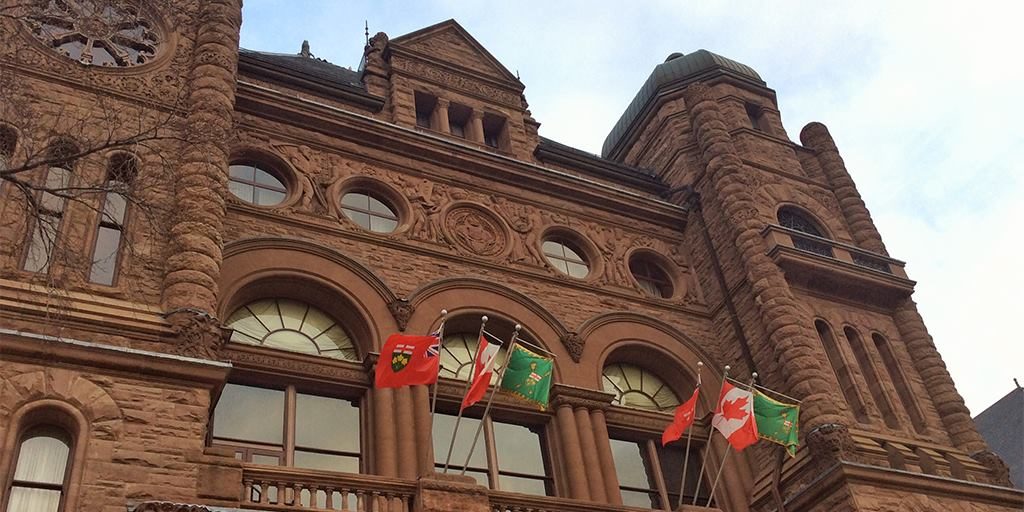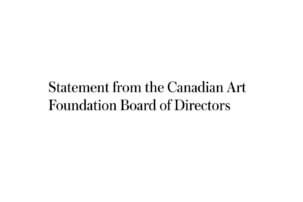Millions of dollars in cuts to the Ontario Arts Council’s general funding, as well as reductions in the Indigenous Culture Fund administrated by the OAC, have been causing alarm among artists, culture workers and Indigenous communities since they came to light late last week.
So far, $5 million in funding to the OAC has been held back, limiting it to $64.5 million annually and causing a 25% reduction in OAC grant program outlay for the rest of this fiscal year. And $2.25 million has been cut from the Indigenous Culture Fund, leaving only $2.75 million while the program, the government says, is being “reviewed.”
“The Indigenous Culture Fund could have been essential for allowing Indigenous communities to take an active role in repairing the losses incurred due to the legacy of residential schools,” Anishinabek Nation Lake Huron Region Chair Scott McLeod said in the Sault Online this week. He added that the fund, just started in 2017, “has been cut off at the knees before it was given a chance to flourish.”
Artists are speaking out too. “We know that the four staff that administered the Indigenous Culture Fund programs are being laid off. That’s very discouraging and disheartening, especially since the Ford government is a proponent of ‘no job losses,’” Nehinaw filmmaker Danis Goulet tells Canadian Art. “And artists are some of the lowest-paid workers in the country, so it’s really frustrating when monies for them are cut.”
After learning about the cuts, Goulet sent a letter of protest to Premier Doug Ford and to Tourism, Culture and Sport Minister Michael Tibollo. And she is encouraging others to do the same, as well as speak out on Twitter and other platforms. She also recommends supporters sign and circulate petitions available on the website of Anishinaabe artist Aylan Couchie.
“I was a beneficiary of the [Indigenous Culture] Fund and received support to bring a Cree language teacher to Ontario to teach a group of Cree Ontarians their language,” Goulet details in a letter posted to social media. “My father speaks Cree, but I do not. The class had an enormous impact on all the participants, including my 11-year-old son.”
In conversation, Goulet notes that the small amount of seed-funding her group received for those Cree language classes spun out into other activities the group kept on with, like monthly language sessions. She also points out that in Cree, “history is embedded in the language and captures all kinds of concepts”—that is, the language is a cultural and heritage treasure in itself.
“The European idea of history is you go to a museum and look at artifacts—but the fact is, in Indigenous cultures, much of this information is embedded in language,” says Goulet. Indeed, museums do seem to be something the Conservatives are ready to promote; just before the OAC and ICF cuts were announced last week, Michael Tibollo, Ontario’s Minister of Tourism, Culture and Sport, posted a tweet from the Royal Ontario Museum stating that “The ROM is an incredibly important economic driver for Ontario’s tourism and cultural sectors.” He also tweeted from there November 20. No cuts have yet been announced for that provincial cultural institution.
Jesse Wente, director of the Indigenous Screen Office, is also concerned about the cuts. He says they will bring lasting damage: “There is an incredible need for trained Indigenous arts administrators right across the sector in Canada,” Wente tells Canadian Art. “So the loss of any positions of this type, and of the talent in those positions, is deeply concerning.”
Though a spokesperson for the Ministry of Culture, Tourism and Sport said these cuts were made to balance a $15 billion deficit, and ensure that Indigenous people are being well served by the fund, Wente notes that $2.25 million is negligible compared to $15 billion, and that there was very little consultation with the Indigenous community about how the ICF was meeting their needs—“certainly that wasn’t transparent, for a government that ran on being transparent.”
Wente also observes that none of these culture cuts were part of any Conservative election platform, and that they, along with other cuts to education and other sectors, undermine commitments past governments had made to Truth and Reconciliation recommendations.
“I think we need to express very loudly when governments undermine steps to restore, repair and create meaningful reciprocal relationships between those communities,” says Wente. “And I think we need to express very loudly that when governments do things they did not campaign on, we guide them in their decision making.”
Further, when asked about the contrast between the provincial government’s continuing support of tax incentives for the film industry, and its recent cut to arts grants, Wente notes longer-term factors in the culture field are at play.
“I think we often have a very narrow view [of culture] and some of it just comes down to language,” says Wente. “The film industry very expressly wants to call itself an industry—even though in Canada it is widely state-supported provincially and nationally…. Christi Belcourt has a great thread showing that investment through grants to an artist is an economic investment into the economy—that money flows back into the economy—because that’s the way arts grants work.”
Anishinaabe artist Aylan Couchie, who helped create two petitions currently circulating, says that submitting hard-copy petitions, in this case, is important—it helps get the protest read directly into the provincial legislature record down the road. The instructions on her website ask signatories to send their hard copies directly to NDP MPP and Culture Critic Jill Andrew or to NDP MPP and Indigenous Relations and Reconciliation Critic Sol Mamakwa.
“I realized the petition wouldn’t get recognized unless it was done officially [in the legislature],” says Couchie. “I thought it would have more weight than an online petition.”
Couchie typically works in contemporary art, and she explains how the ICF was especially valuable in that it reached beyond the white-cube spaces into other community needs.
“When you look at where the granting for the Indigenous Culture Fund was going in the first few rounds, it’s been going to First Nations language groups, it’s going to native friendship centres, it’s going to actual communities and community-based work—not some visual arts symposium,” says Couchie. “It was a lot of youth- and elder-based programs. I feel like it has the potential to really do a lot of good for our communities.”
Moving forward, Couchie wants to keep the advocacy against the recent cuts going.
“What I would really love is to see people who received grants get active in helping keep this program alive—whether that be sharing links to this petition, or writing letters, or calling their MPPs,” says Couchie. She says there may also be more advocacy events in the new year.
MPP and NDP Culture Critic Jill Andrew also has this recommendation for those looking to act: “While the house is in recess in early January and February, MPPs are spending time in their riding with their communities,” Andrew says via email. “And every riding in this province has artists and organizations that have been funded by the Ontario Arts Council. This is an excellent opportunity for concerned folks to connect directly with their local MPPs through phone calls and through in-person meetings to tell them what you think about these cuts, the value of public funding for the arts, how these cuts will impact your work, your communities, your lives, and to ask them to press for change when the House resumes in February.”

 A view of Queen's Park, site of the Legislative Assembly of Ontario. Photo: Facebook / Ontario Arts Council.
A view of Queen's Park, site of the Legislative Assembly of Ontario. Photo: Facebook / Ontario Arts Council.






